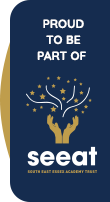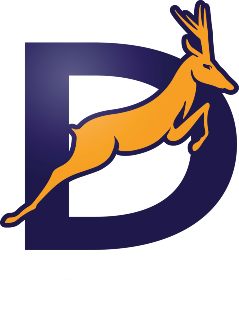Statistics

Year 10 curriculum plans
| Term | What are we learning? | What Knowledge, Understanding and Skills will we gain? | What will excellence look like? | How will these be assessed? |
| Autumn |
Foundation: Number. Algebra. Graphs, tables and charts. Fractions and percentages.
|
Students will revisit the key number facts and their uses. This includes calculations, decimal numbers, place value, factors, multiples and primes, squares, cubes and roots, index notation, prime factors. Students will revisit their algebraic manipulation techniques. This includes simplifying expressions, substitution, using formulae, expanding brackets, factorising, using expressions and formulae. Students will learn how data can be presented, displayed, interpreted and utilised. This includes frequency tables, two-way tables, representing data, time series, stem & leaf diagrams, pie charts, scatter graphs, line of best fit. Students will practise calculating with fractions, decimals and percentages. This will include working with fractions, operations with fractions, multiplying and dividing fractions, fractions and decimals, fractions and percentages, calculating percentages. |
Students will also be able to apply the algebraic techniques to solve worded and geometrical problems. Students will also be able identify why graphs may be misleading and demonstrate that they can interpret what all of these different charts and graphs show and answer questions in many real-life contexts. Students will also be able to calculate fluently using each of these skills to compare investments, solve budgeting problems and answer reasoning questions with correct justifications. | These units will be assessed using formative assessment whilst being delivered. Past GCSE exam questions will be used within lessons and with the weekly homeworks. The end of unit assessment will be marked by the teacher and recorded centrally for monitoring progress. |
| Autumn |
Higher:Number.Algebra.Interpreting and representing data.Fractions, ratio and percentages.
|
Students will revisit the key number facts and their uses. This will include solving number problems using reasoning, place value & estimation, HCF & LCM, calculating with indices, zero, fractional and negative indices, calculating in standard form, simplifying surds and rationalising the denominator.Students will revisit their algebraic manipulation techniques. This includes working with algebraic indices, expanding and factorising, solving equations, using and rearranging formulae, distinguishing between expressions, equations, formulae and identities, linear sequences, non-linear sequences, expand and factorise quadratics.Students will learn how data can be presented, displayed, interpreted and utilised. This includes drawing time series graphs, scatter graphs & LOBF, suitability of averages, averages and range of grouped data, two-way tables, misleading graphs.Students will practise calculating with fractions, decimals and percentages and ratios. This will include Calculating reciprocals, solve ratio problems, convert currencies & measures, direct proportion, percentage increases and decreases and real-life percentage problems. | Students will also be able to calculate fluently and solve problems in context using all of the skills gained.Students will also be able to apply these algebraic techniques to solve worded and geometrical problems.Students will also be able identify why graphs may be misleading and demonstrate that they can interpret what all of these different charts and graphs show and answer questions in many real-life contexts such as finance.Students will also be able to calculate fluently using each of these skills to compare investments, solve budgeting problems and answer reasoning questions with correct justifications. | These units will be assessed using formative assessment whilst being delivered. Past GCSE exam questions will be used within lessons and with the weekly homeworks. The end of unit assessment will be marked by the teacher and recorded centrally for monitoring progress. |
| Spring |
Foundation:Equations, inequalities and sequences.Angles.Averages and range.
|
Students will develop their algebraic manipulation techniques, solving equations and inequalities, and working with sequences to solve problems. This will include solving linear equations, solving equations with brackets, introducing inequalities, solving inequalities, using formulae to solve equations, identify, equations, expressions, formulae and identities, generating sequences, nth term of a sequence.Students will use the angle properties of 2D shapes and parallel lines to solve problems. This will include angles in triangles, interior and exterior angles of polygons.Students will develop their further data handling techniques to present, display, calculate with and interpret data. This will include the mean & range from a list and frequency table, mode, median & range from a stem & leaf diagram, outliers, advantages and disadvantages of averages, estimate of mean, sampling and avoiding bias. | Students will also extend their use of all of these skills by solving problems with algebraic geometry, sequences, inequalities and solving equations from worded problems.Students will also confidently apply all the knowledge and skills to answer more complex geometrical problems.Students will also apply these techniques to analyse, interpret and comment on data that could occur in research, business and many other applications. They will also identify bias in data applications. | These units will be assessed using formative assessment whilst being delivered. Past GCSE exam questions will be used within lessons and with the weekly homeworks. The end of unit assessment will be marked by the teacher and recorded centrally for monitoring progress. |
| Spring |
Higher:Angles and trigonometry.Graphs.Area and volume.Transformations and constructions.
|
Students will use angle properties of 2D shapes, Pythagoras’ Theorem and trigonometry to solve problems. This will include applying angle properties of triangles & quadrilaterals, interior & exterior angles of polygons, Pythagoras’ Theorem, trigonometry. angles of elevation & depression, know exact values of some trig ratios and use them to solve problems.Students will how to plot a range of different graphs accurately, demonstrating understanding and interpreting what is shown. This will include plotting linear graphs, finding the gradient, y-intercept, y=mx+c, graphing rates of change, work with line segments and plot quadratic graphs.Students will revisit how to calculate perimeter, area, volume and surface areas. This will include converting units of area and volume, accuracy & bounds, volume and SA of a prism, area & circumference of a circle, perimeter & area of sectors, volume & SA of cylinders, spheres, pyramids & cones.Students will learn to draw and interpret plans and elevations, scale drawings and bearings. They will perform transformations on 2D shapes and draw constructions accurately. | Students will also calculate angles of elevation & depression, know how to work out the exact values of some trig ratios without a calculator and use them to solve problems in context.Students will also be able to plot graphs of cubic & reciprocal graphs and identify their key features, draw and interpret linear & non-linear real-life graphs, draw the graph of a circle. Students will also apply these techniques to answering real life questions in different contexts. Students will also combine these skills to solve more complex geometrical problems algebraically as well as numerically.Students will also combine transformations, describe transformations fully and use their construction skills to solve problems on loci. They will learn how these techniques are used in construction and engineering to solve real-life problems. | These units will be assessed using formative assessment whilst being delivered. Past GCSE exam questions will be used within lessons and with the weekly homeworks. The end of unit assessment will be marked by the teacher and recorded centrally for monitoring progress. |
| Summer |
FoundationWe are learning to calculate perimeter, area, convert units, volumes and surface areas. We are also learning about linear graphs and the equation of a straight line. We will also learn to transform a shape correctly on coordinate axes.
|
Students will learn to calculate perimeter & area of rectangles, parallelograms, triangles & trapezia. Students will learn to convert units of area, calculate the area of compound shapes, volume and surface area of cuboids & prisms, converting units of volume. Students will learn to find the midpoint of a line, plot lines parallel to the axis, plot linear graphs, calculate gradient and the y-intercept and use it to find the equation of a line in the form y=mx+c. Students will also learn to draw and interpret real life graphs and distance-time graphs. Students will learn to translate a shape using a column vector, reflection, rotation and enlargement on a coordinate grid. They will learn to describe transformations and combine transformations. | Students will solve problems in context that require them to calculate perimeters, areas, volumes and surface areas of shapes. They will convert correctly between units of length, area and volume. Students will graphs of linear functions modelling real life scenarios, interpreting the gradient and y-intercept in context. They will be able to express the equation of the line in the form y=mx+c. Students will be able to interpret distance time graphs with different scales on the axes with accuracy. Students will be able to transform shapes correctly on a set of axes with all four quadrants. They will be able to describe transformations fully. They will combine transformations and then describe as a single transformation. | These units will be assessed using formative assessment whilst being delivered. Past GCSE exam questions will be used within lessons and with the weekly homeworks. The end of unit assessment will be marked by the teacher and recorded centrally for monitoring progress. |
| Summer |
HigherWe are learning to solve quadratic equations, simultaneous equations and inequalities. We are learning about probability and how it is represented with diagrams and tables. We will then calculate using the rules of probability to solve problems. We are learning how to solve problems by applying multiplicative reasoning techniques. We are learning to recognise congruence and similarity and to apply our knowledge to solve problems.
|
Students will learn to solve quadratic equations, use the quadratic formula and complete the square. Students will learn to solve simultaneous equations using algebraic methods. They will learn to solve linear inequalities and show solutions using set notation. Students will learn to calculate the probability of combined events, mutually exclusive events, experimental probability and independent events. Students will learn to use frequency trees and tree diagrams to calculate probabilities. They will learn to use Venn diagrams and set notation to represent probability. Students will learn how to calculate repeated percentage change for growth and decay. They will learn to convert metric speed measures and calculate with speed and acceleration. They will learn to solve problems with compound measures and solve problems with direct and indirect proportion. Students will learn the different conditions of congruence and proof and solve congruence problems. They will calculate the scale factors in similar shapes and calculate scale factors for areas and volumes. | Students will be able to select the correct method to use when solving quadratic equations. They will be able to apply this to questions in different contexts to find valid solutions. They will solve simultaneous equations where both are linear or there is one linear and one quadratic equation. They will solve inequalities and be able to show the solutions both on a number line or using set notation. Students will be able to solve a variety of complex probability problems including independent and dependent events. They will be able to use Venn diagrams and apply set notation to solving real life probability problems. Students will solve problems in context that involve repeated percentage change. They will be able to convert between different compound units and solve real life problems using various compound calculations including speed, density, pressure and rates of flow. They will recognise when to use different techniques to solve complex problems with direct and indirect proportion. Students will recognise the different conditions of congruence and proof and apply them to solve congruence problems. They will identify real life problems with similarity and calculate scale factors and solve problems with linear measures, areas and volumes. | These units will be assessed using formative assessment whilst being delivered. Past GCSE exam questions will be used within lessons and with the weekly homeworks. The end of unit assessment will be marked by the teacher and recorded centrally for monitoring progress. |





